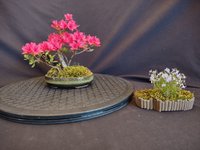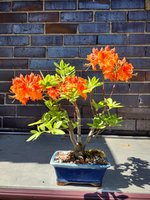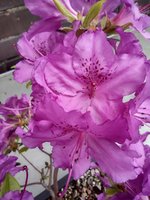Gosh, This is a real sticky wicket! Hold those horses…!
Tracing back, most, if not all, of the original evergreen azaleas came from Japan/China. Then these were hybridized… mutated whatever.. and marketed.
@Glaucus has expounded on this point a number of times.
North American is the home of deciduous azaleas…. not Evergreen azaleas!
And many Evergreen azaleas have come from Japan by way of hybridization in other countries, such as the Netherlands .
To make things much more complicated in the early 1900 collectors/gardeners like Domoto and Wilson brought in Evergreen azaleas, mainly Kurumes at that time, from Japan. These azaleas were often renamed to fit “American sensibilities”
(
@Srt8madness) As a prime example the Kurume Evergreen azalea “Kirin” was grown in Japan for 2-300 years before it was renamed as Coral Bells when imported by the Domoto brothers nursery.
Then Kirin was again renamed by Wilson as “Daybreak” and labeled as one of his “original Wilson’s 50”…. trying to steal a march from the Domotos! In a rare case the Domoto name Coral Bells stuck and the Japanese name Kirin was mostly lost in the US.
Hope this helps….
Cheers
DSD sends
(… a bit funny as I’m writing this message from Asia (Tiawan) today!)









